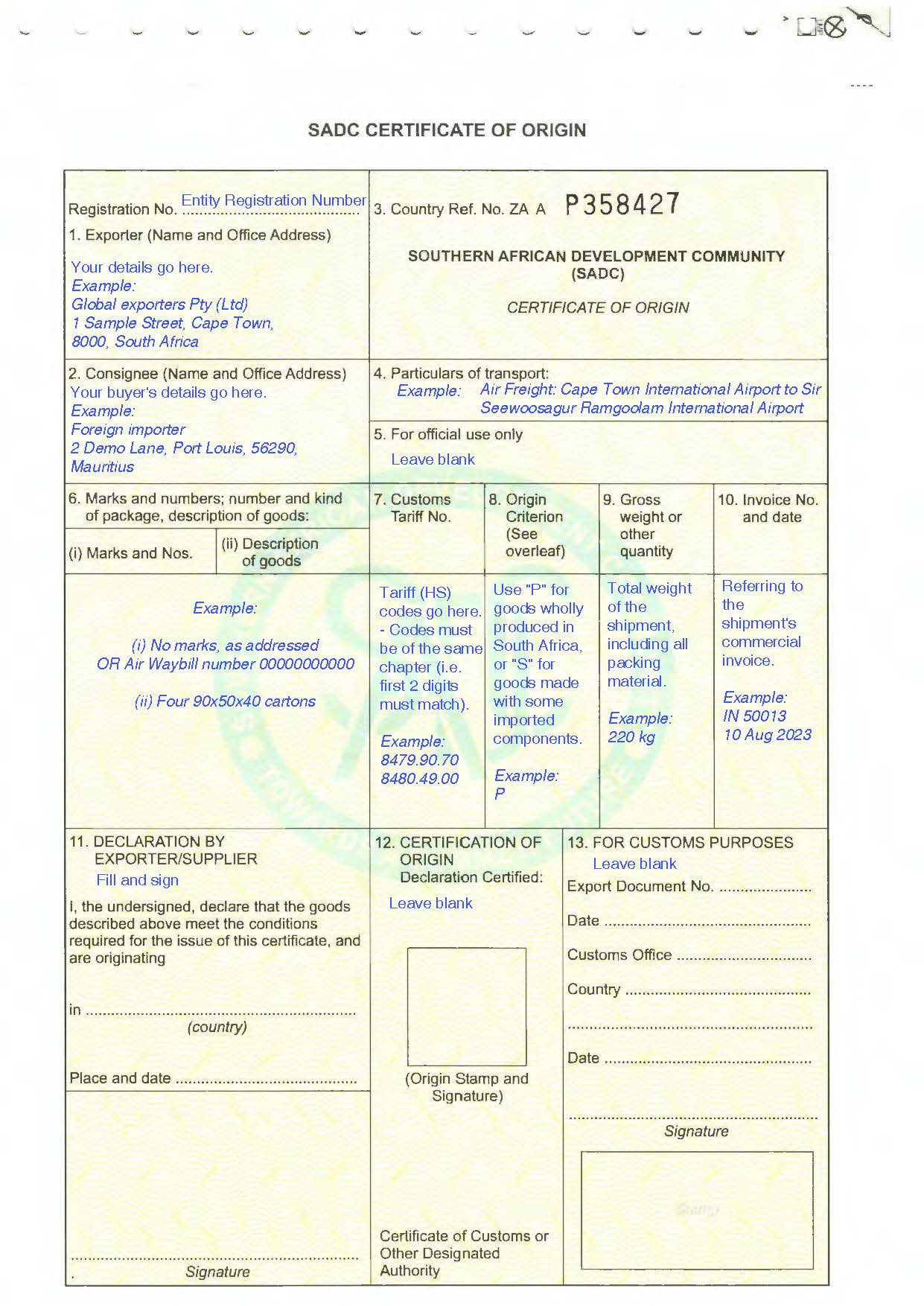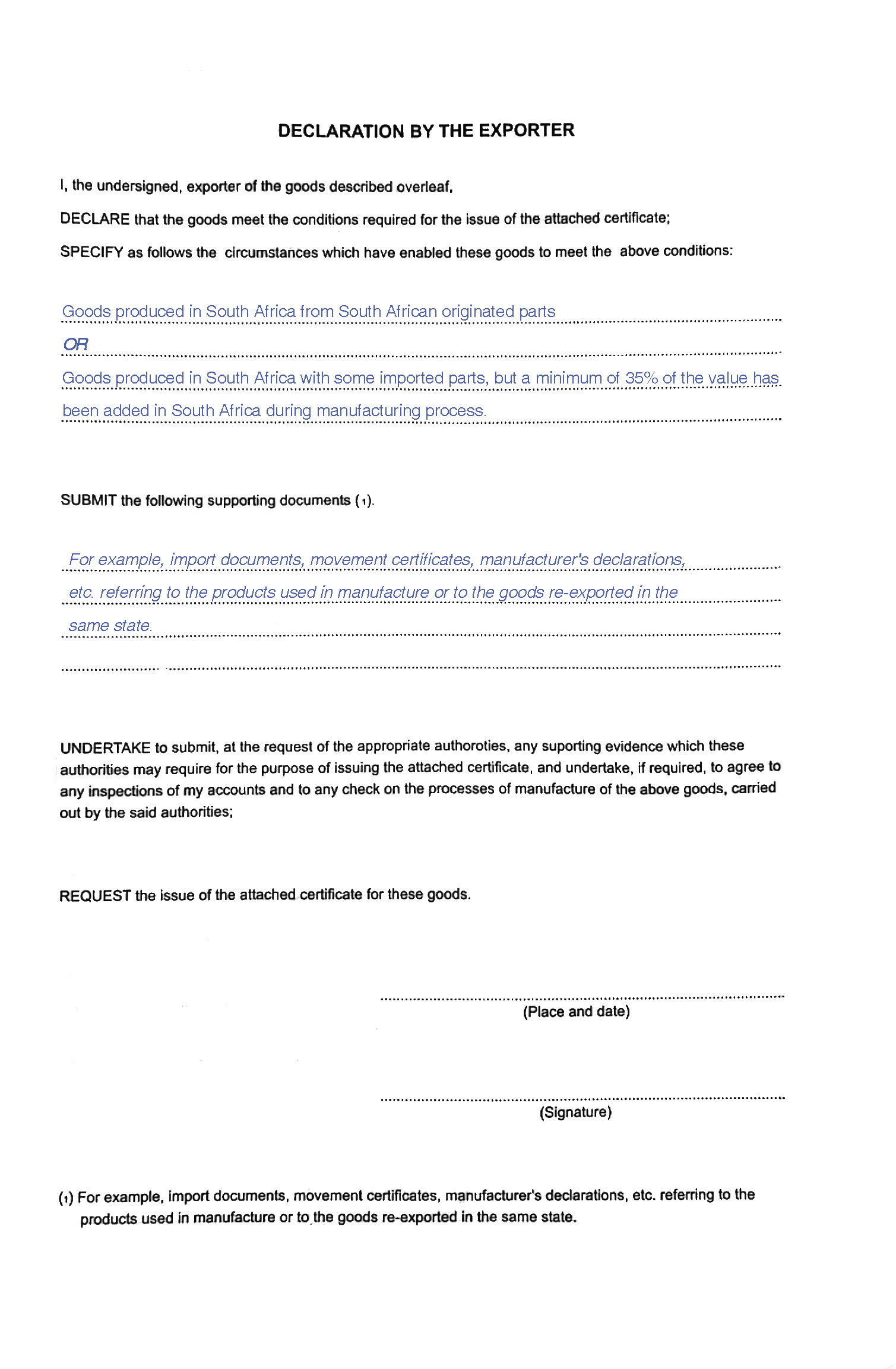How to complete a SADC (Southern African Development Community) certificate
Are you exporting South African-origin products to a country in Southern Africa? Do you import goods from Southern African countries into South Africa? Then you may benefit from the Southern African Development Community (SADC) trade agreement.
Trade agreements exist between two or more countries and describe how they will collaborate to ensure mutual trade benefits. In these cases, less duty taxes are placed on products, and products can move more easily between the party countries.
The Southern African Development Community (SADC) is longstanding, over 40 years old, and comprehensive, consisting of 16 member states in Southern Africa, including South Africa. The European Union (EU) is the SADC’s biggest trading partner, with South Africa accounting for the majority of EU imports to and EU exports from the region.
As an exporter of South African-origin products, you can apply for the SADC certificate of origin if your products meet the criteria wholly or partly manufactured in South Africa. A certificate of origin is an internationally recognised document confirming that products being imported were obtained, produced, manufactured or processed in a specific country.
As an importer of these goods, you can request that your supplier furnish you with the SADC certificate.
How would a SADC certificate help me?
A SADC certificate accompanying a shipment of exports destined for a SADC nation has a competitive edge. Customs from a trade partner country charge little to nil import duty on the cargo when accompanied by a SADC certificate of origin. As a result, the product is more desirable to buyers who benefit from the savings.
How do I access a SADC certificate?
If you are purchasing from a South African exporter, request that they supply a certificate with each consignment shipped. If you are a South African exporter:
- Check that your goods comply to the rules of origin.
- Register at South African Customs as a SADC exporter.
- Apply for SADC certificates.
- Fill in and send one SADC certificate per export of to a trade partner country.
How do I complete a SADC certificate?
Each section of the certificate is numbered, as seen in the examples given. A guide on completing these sections follows:
Section 1: The exporter’s (your) name and address
Section 2: The buyer or receiver’s name and address
Section 3, 5, 12 and 13: For official use – leave this blank
Section 4: Mode of transport (road/sea/air). You can add the departure and destination cities or the transport vessel number, but this is not essential. For example, “Air Freight from Cape Town International Airport to Sir Seewoosagur Ramgoolam International Airport” or “Seafreight, MSC Marina V 123”.
Section 6: A basic description of the goods and how they are packed. Are there any marks on the packaging, or is there a container number? If there aren’t marks, state “no marks”. An example of a containerised shipment would be: “1 x 6 metre container containing 1000 cartons of dog food – Container number 0000000000”.
Section 7: List the tariff codes of all cargo items here. Take note that all tariff codes must be from the same chapter in the tariff book, i.e.it must start with the same 2 digits. If your shipment contains goods from other chapters, you’ll need to complete more than one SADC certificate.
Section 8: Insert “P” for goods wholly produced in South Africa, or “S” for goods made with some imported components.
Section 9: This is the total weight, including packing material.
Section 10: Give the number and date of the commercial invoice accompanying your cargo.
Section 11: State country of origin, place, date and sign.
Back Page:
Turn over the SADC certificate and complete the back page by filling in the producer’s details. If you did not manufacture or grow the goods, you are the exporter, not the producer. In this case, you’ll need to complete 2 copies of the SADC certificate.
The back page also requires an itemised list of the shipment stating the quantities and the classification you used in section 8 for each line. (“P” for goods wholly produced in South Africa, or “S” for goods made with some imported components)
An example of this version follows (click here for the PDF version).


To learn about other trade agreements you could benefit from, read our blog post on Trade Agreements & Certificates of Origin.






